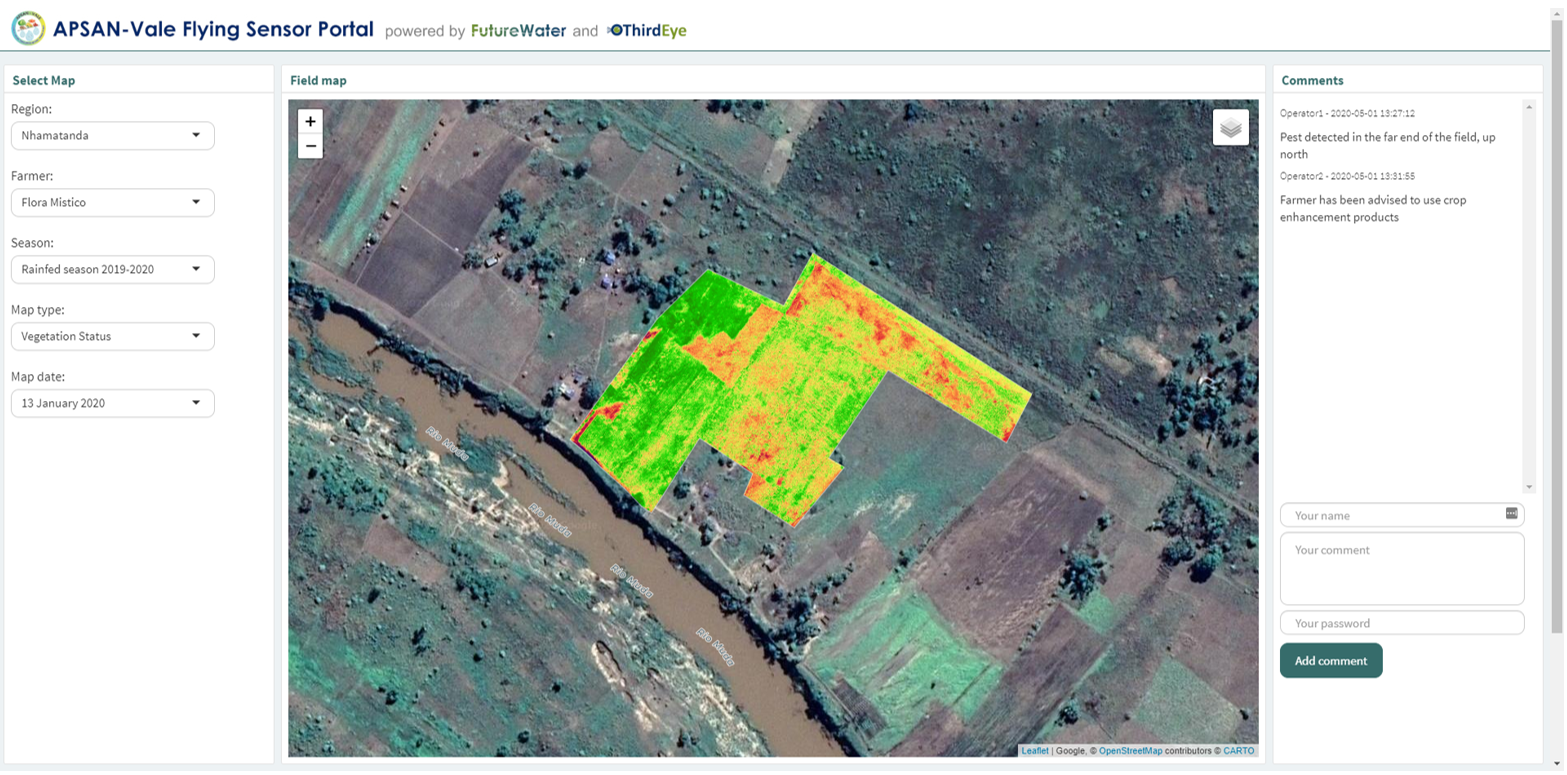Today FutureWater launched a portal for flying sensor imagery taken in Mozambique as part of the APSAN-Vale project. The project, which started in 2018, is piloting innovations to increase the water productivity and food security for climate resilient smallholder agriculture in the Zambezi valley of Mozambique. It will demonstrate what the best combinations are of adoption strategies and technological packages, with the largest overall impact in terms of water productivity, both at the plot-level, sub-basin as well as basin-level.
The main role of FutureWater is monitoring water productivity in target areas using an innovative approach of Flying Sensors (drones), a water productivity simulation model and field observations. Flying sensors provide high resolution imagery, which is suitable for distinguishing the different fields and management practices existent in smallholder farming. For this purpose, a local team of FutureWater flying sensor operators, have been trained at the end of 2018. Ever since, the operators perform regular flights over farmers’ fields using flying sensors that have cameras which can measure the reflection of near-infrared light, as well as visible red light. These two parameters are used to calculate the crop performance, resulting in maps showing the vegetation status (the greener the color, the better the crop is performing), with a resolution of about 2 cm/pixel. This information is used both for monitoring the water productivity of the selected fields and determining areas of high or low water productivity. Information on the spatial variation of water productivity can assist with the selection of technical packages to introduce and implement in the field.
About the portal
Now, all vegetation status maps can be found in an online portal, which can be accessed through futurewater.eu/apsanvaleportal. The flying sensor maps are uploaded to the portal automatically after they have been processed by the local FutureWater operators. In this way, the operating team can easily access the maps in the field to observe areas of higher or lower water productivity, by using a tablet, laptop or smartphone. Also, field agents of project implementing partners Resilience and HUB can access the maps in-field to provide useful advisory to farmers to prevent crop loss and increase their water productivity. Farmers are also able to view the maps themselves and alter their farm management decisions.

On the left side a map can be selected by choosing a district, farmer, season, map type and date. In the middle of the screen the map will be shown and the user is able to zoom in and out and change the background layer in the top right. In the right section comments can be added to specific maps. This tool is extremely useful for operators and field agents to note down field observations and advisory that has been given to the farmer. The images and comments act as a database and can be used to draw information from in future farm visits.
Future plans
For now only images of the past growing season have been added to the portal. Over the course of the next few weeks the following improvements will be made to the portal:
- All images taken during the complete project period will be added.
- Apart from the Vegetation Status maps, also Visual flying sensor images and Water Productivity maps will be added.
- A function to export the maps, comments, weather data and market prices to a printable pdf will be added.
- The portal will be continuously tested in the field in Mozambique.


